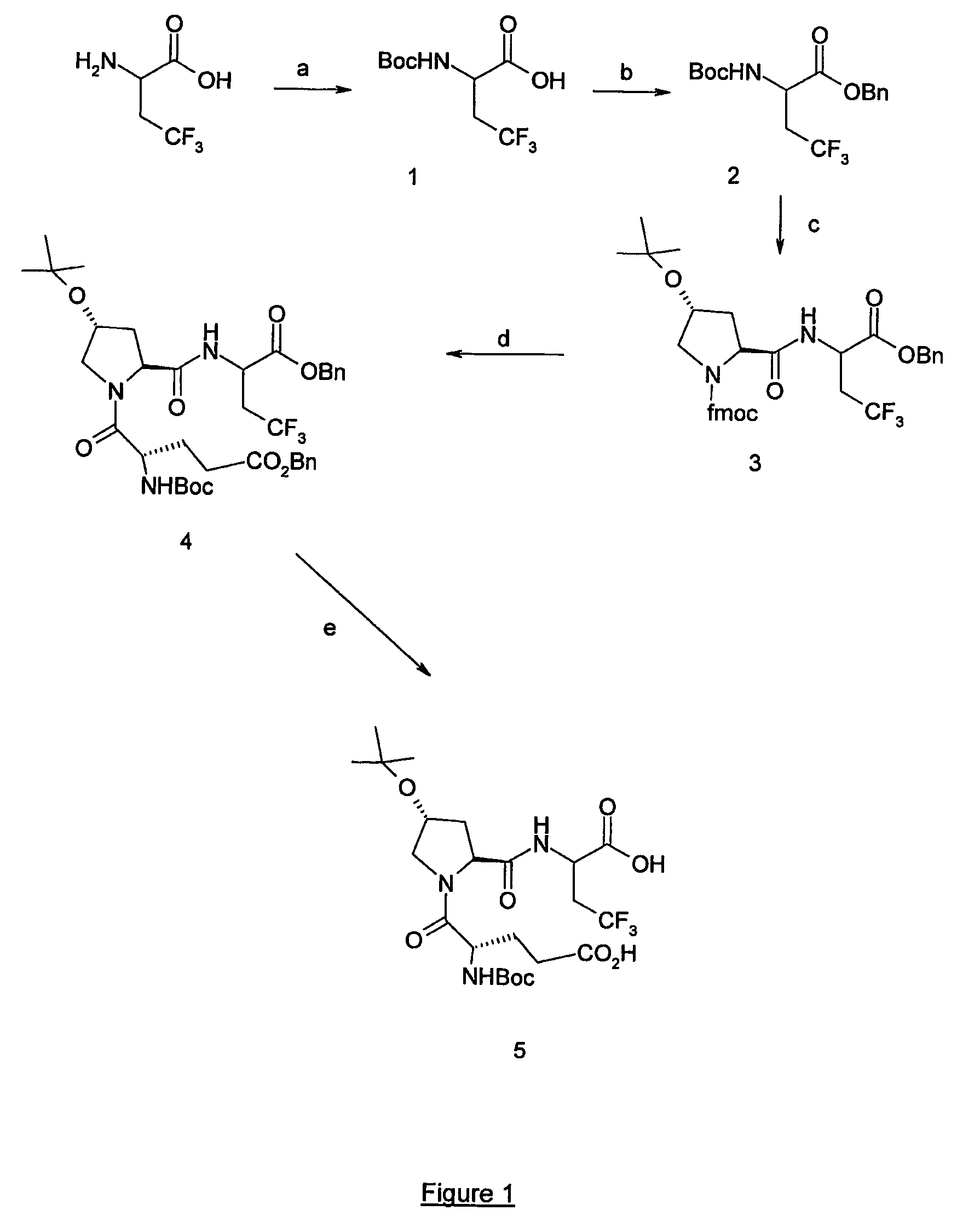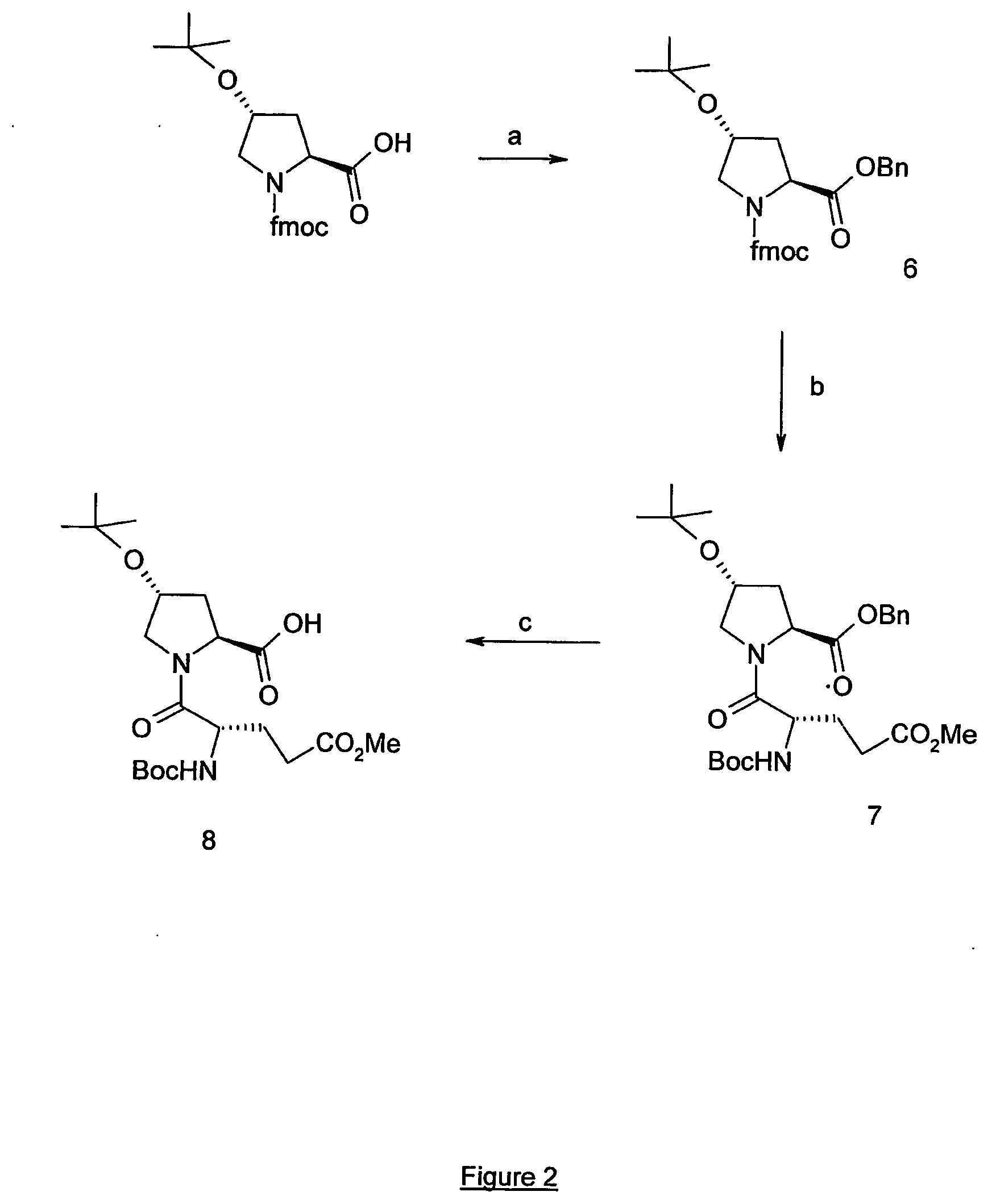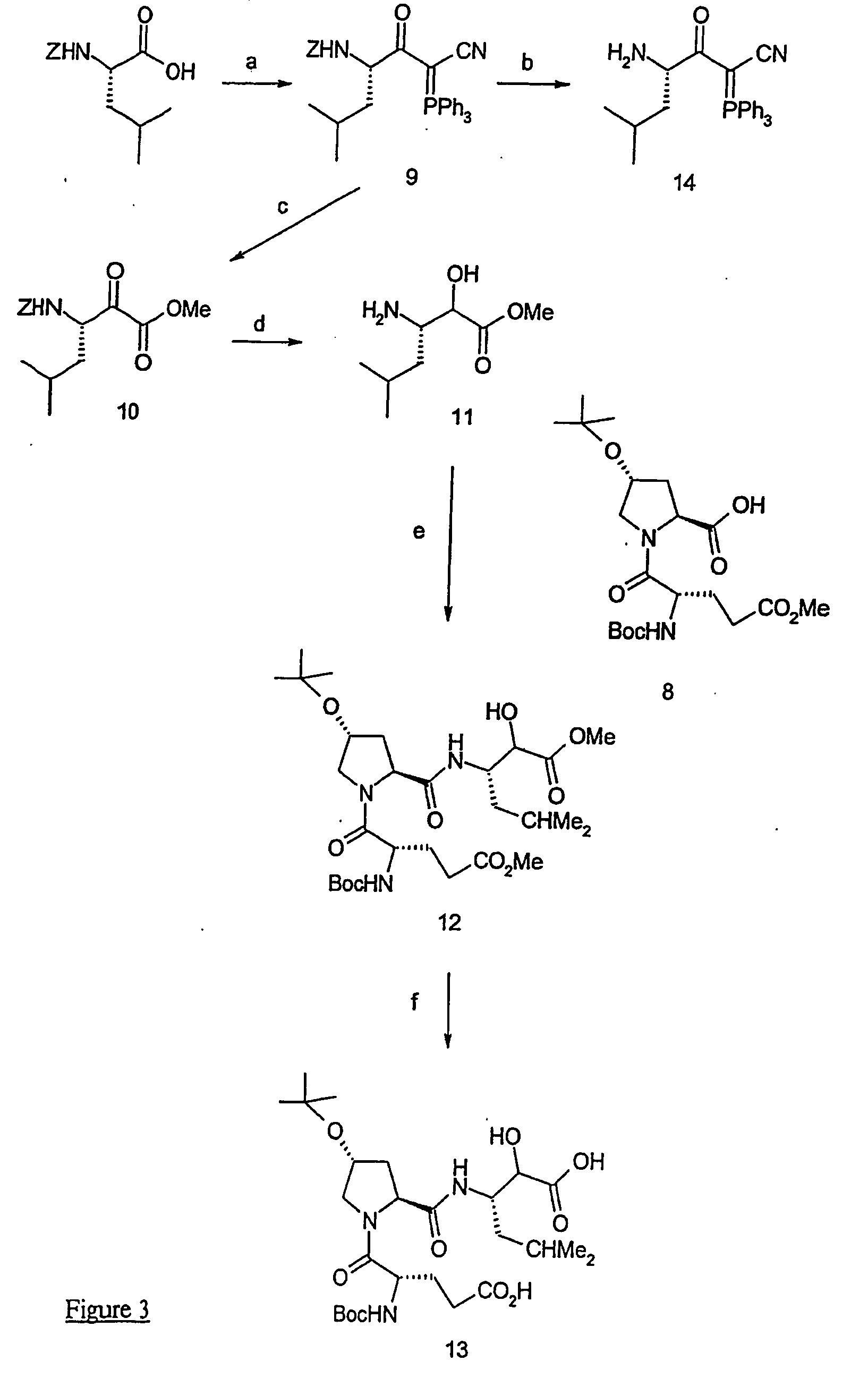Pyrrolidine derivatives for use in treating heaptitis c virus infection
a technology of pyrrolidine derivatives and heaptitis, which is applied in the direction of tripeptide ingredients, tetrapeptide ingredients, dipeptide ingredients, etc., can solve the problems of high error rate of hcv rdrp, and poor treatment progress of patients suffering from hcv infection. , to achieve the effect of enhancing selective biological properties, enhancing biological properties, and increasing biological penetration
- Summary
- Abstract
- Description
- Claims
- Application Information
AI Technical Summary
Benefits of technology
Problems solved by technology
Method used
Image
Examples
example 1
Compound 1
[0142] A solution of 2-amino-4,4,4-trifluorobutyric acid (100 mg, 0.636 mmol) in dioxane (0.6 mL) and 1M NaOHaq (1.2 mL) was stirred at 0° C. for 10 min. Boc2O (166 mg. 0.763 mmol) was then added and the mixture was stirred at room temperature for 24 h. The pH was periodically adjusted to 9 by addition of a 1M NaOHaq solution. The mixture was extracted with Et2O then acidified (pH=2) with the addition of 5% aqueous HCl solution. The acidic aqueous phase was extracted with EtOAc and combined organic phases were washed with brine. After drying on MgSO4, concentration under reduced pressure afforded the protected amino acid 1 (92 mg, 71%).
example 2
Compound 2
[0143] Compound 1 (54 mg, 0.215 mmol) was suspended at room temperature in DCM (5 mL) with 0.06 mL of benzyl alcohol (0.537 mmol), DCC (44 mg, 0.236 mmol) and DMAP (29 mg, 0.236 mmol). The solution was stirred for 18 h, filtered on Celite and successively washed with a 5% solution of aqueous HCl and a 10% solution of aqueous NaHCO3. The organic phases were dried over MgSO4, evaporated and the residue was purified by chromatography (eluent gradient hexane / ether 95:5 to 1:1) to give the pure compound 2 (41 mg, 55%).
[0144]1H NMR (CDCl3) δ: 1.34 (s, 9H), 2.65 (m, 2H), 4.50 (m, 1H), 5.10 (s, 2H), 5.18 (m, 1H), 7.30 (m, 5H).
example 3
Compound 3
[0145] Compound 2 (664 mg, 1,91 mmol) was suspended in DCE at room temperature and 10 eq of TFA (1,47 mmol) were added. The solution was stirred for 2 h, evaporated and suspended in DCE (10 mL). Fmoc-L-Hyp(OtBu) (835 mg, 2,0 mmol), 2 eq of DIEA (665 μL, 3,82 mmol) and 1,06 eq of BOP (897 mg, 2,03 mmol) were added and the mixture was stirred for 20 h at room temperature. The solvent was then evaporated and the residue dissolved in EtOAc. The organic phases was successively washed with aqueous solutions of 5% citric acid and 5% NaHCO3. The organic phases were dried over MgSO4, evaporated and the residue was purified by chromatography (30% EtOAc / Hexane) to give the pure compound 3 (1,2 g, quantitative). This compound was directly used in the next step.
PUM
| Property | Measurement | Unit |
|---|---|---|
| time period | aaaaa | aaaaa |
| time period | aaaaa | aaaaa |
| temperature | aaaaa | aaaaa |
Abstract
Description
Claims
Application Information
 Login to View More
Login to View More - R&D
- Intellectual Property
- Life Sciences
- Materials
- Tech Scout
- Unparalleled Data Quality
- Higher Quality Content
- 60% Fewer Hallucinations
Browse by: Latest US Patents, China's latest patents, Technical Efficacy Thesaurus, Application Domain, Technology Topic, Popular Technical Reports.
© 2025 PatSnap. All rights reserved.Legal|Privacy policy|Modern Slavery Act Transparency Statement|Sitemap|About US| Contact US: help@patsnap.com



